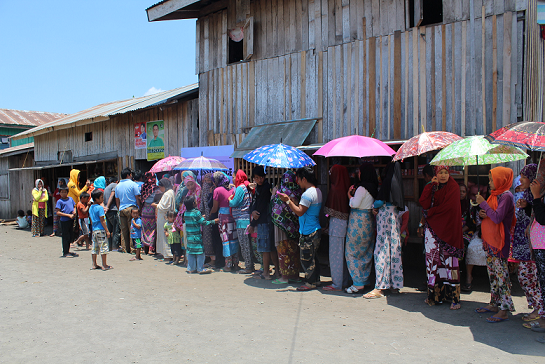
Local NGOs respond to emergencies and build community resilience in Mindanao
Humanitarians at home in coalition
Local NGOs and civil society organizations (CSOs), as part of their own communities, work to reduce poverty and drive sustainable development. When disasters or conflict strike, they are the first to respond with relief assistance and stay to support recovery and build community resilience long after other organizations have left.
Mindanao is home to diverse groups of Muslims, Christians and indigenous peoples who suffer recurrent displacement due to tropical cyclones, seasonal flooding and armed clashes. Here, local organizations have engaged in an array of programmes encompassing humanitarian response, development assistance and peacebuilding. The Mindanao Coalition of Development NGO Networks (MINCODE) is one of the largest NGO coalitions in the Philippines composed of 11 CSO networks with some 700 organizations, a few of which will be introduced below.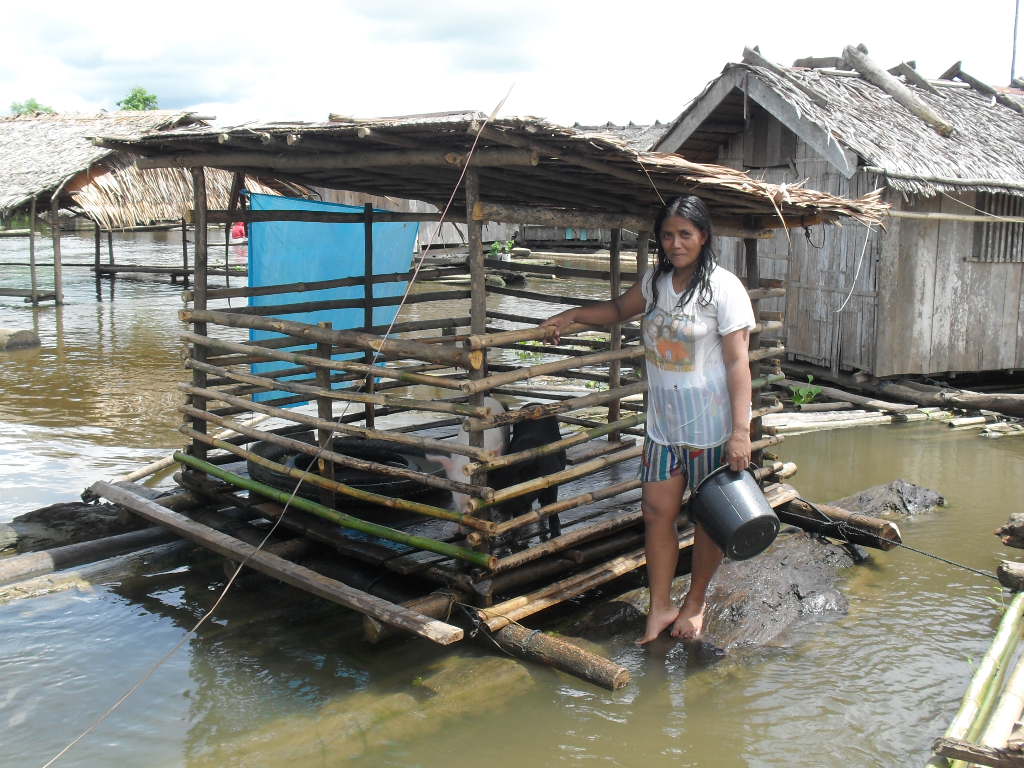
Building flood resilience in indigenous villages of Agusan Marsh
The Philippine Partnership for the Development of Human Resources in Rural Areas (PhilDHRRA) is a network of 52 NGOs that run agrarian reform and rural development programmes across the country. PhilDHRRA’s Mindanao chapter recently completed a three-year climate change adaptation and disaster risk reduction and management project that covered eight municipalities in Agusan del Sur province.
Monobo tribes form the majority of indigenous people who reside in the Agusan Marsh, which floods annually between November and February. The communities rely on fishing during the wet season and farming rice and vegetables during the drier months. They have also adapted to living in floating villages, complete with schools, daycare centres and health stations, and using pump boats for transportation.
Increasingly severe flooding in recent years has forced the Manobos to elevate their homes and infrastructure. Disaster risk reduction and preparedness have become their priorities, according to Glenn Bais, Mindanao Regional Coordinator of PhilDHRRA. The group provided these communities with pump boats, a spiral tube water wheel for power-free irrigation, and flood- and pest-resistant rice seeds. It also set up a seed bank to maintain local seed availability and diversity.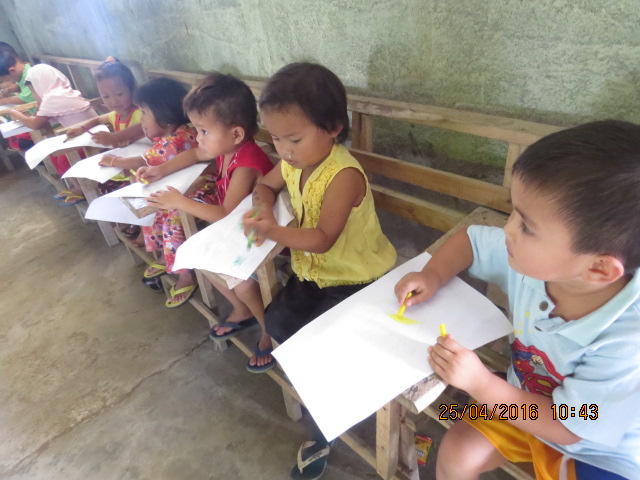
Delivering humanitarian aid in conflict-affected Lanao del Sur and Basilan
The Maranao People Development Center (MARADECA), Inc. is a local NGO with 200 staff operating in Lanao del Sur, one of the poorest and the most conflict-prone provinces in Mindanao. When fighting broke out in the municipality of Butig in February between government forces and local armed insurgents and uprooted as many as 40,000 people, MARADECA staff helped the displaced residents flee to safer grounds. They conducted priority needs assessments which informed subsequent relief assistance. Despite the volatile security situation, they continued to implement peacebuilding, education and microfinancing projects to help the returning residents get back on their feet.
Farida, the NGO’s Peace and Development Coordinator, said she is happy to assist the grassroots peacebuilding initiatives because “I feel fulfilled and I see myself growing in the work that contributes directly to the improvement of the community.” At age 27, she takes pride in mediating community disputes and taking part in provincial meetings to advance political dialogue.
Another NGO, the Integrated Resource Development for Tri-People (IRDT), operates out of Zamboanga City. IRDT’s 73 staff members work primarily in the provinces of Basilan, Sulu and Tawi-Tawi. In Basilan, intermittent clashes between government forces and the Abu Sayyaf Group frequently displace the local population. Working in partnership with UN agencies and International NGOs, whose staff have limited access to these provinces due to security concerns, IRDT and other local NGOs have risked kidnapping and firearm encounters to reach displaced people with relief items and health services.
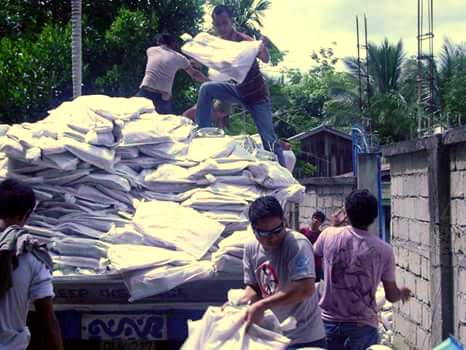
Will the Grand Bargain do justice to the long-advocated localization of aid?
In spite of funding shortages and security risks, local organizations like PhilDHRRA, MARADECA and IRDT continue to foster community-based projects that find local solutions to complex challenges in Mindanao. They often find themselves operating in the shadow of larger aid organizations, and are at times frustrated at having to prove they are capable of serving their own people. “International agencies do not always trust the capacity and expertise of local NGOs. This can delay response in the wake of disasters,” said one NGO’s field officer. Yet their work is well recognized by local governments and, most importantly, by the people they serve.
Less than two per cent of global humanitarian funding currently goes directly to national NGOs and CSOs, even though it is widely acknowledged that aid delivered by local agencies is often faster, cheaper and more culturally appropriate. The first-ever World Humanitarian Summit convened by the UN Secretary-General on 23 and 24 May in Istanbul, Turkey, tackled localization of aid among other pressing humanitarian concerns of the world today. At the summit, donors and humanitarian partners agreed to a “Grand Bargain” for smarter humanitarian financing, which included a commitment to channelling “25 per cent of funding to national and local responders as directly as possible by 2020”. This must now be followed by tangible steps to empower local organizations and help them implement humanitarian and developing programmes with greater impact, community relevance and sustainability.“I feel fulfilled and I see myself growing in the work that contributes directly to the improvement of the community.”
- Farida, Peace and Development Coordinator at MARADECA
“International agencies do not always trust the capacity and expertise of local NGOs. This can delay response in the wake of disasters.” - A local NGO field officer
Preparing for the new rainy season
Above-normal rainfall and strong typhoons expected in late 2016
On 24 May, the Philippine Atmospheric, Geophysical and Astronomical Services Administration (PAGASA) declared the onset of the rainy season associated with the southwest monsoon. The monsoon, along with the Intertropical Convergence Zone and low pressure areas (some of which will develop into tropical cyclones), will bring rains to the Philippines from late May to October. Meanwhile, dry conditions are expected to persist in parts of Mindanao and the western Philippines until July as El Niño weakens.
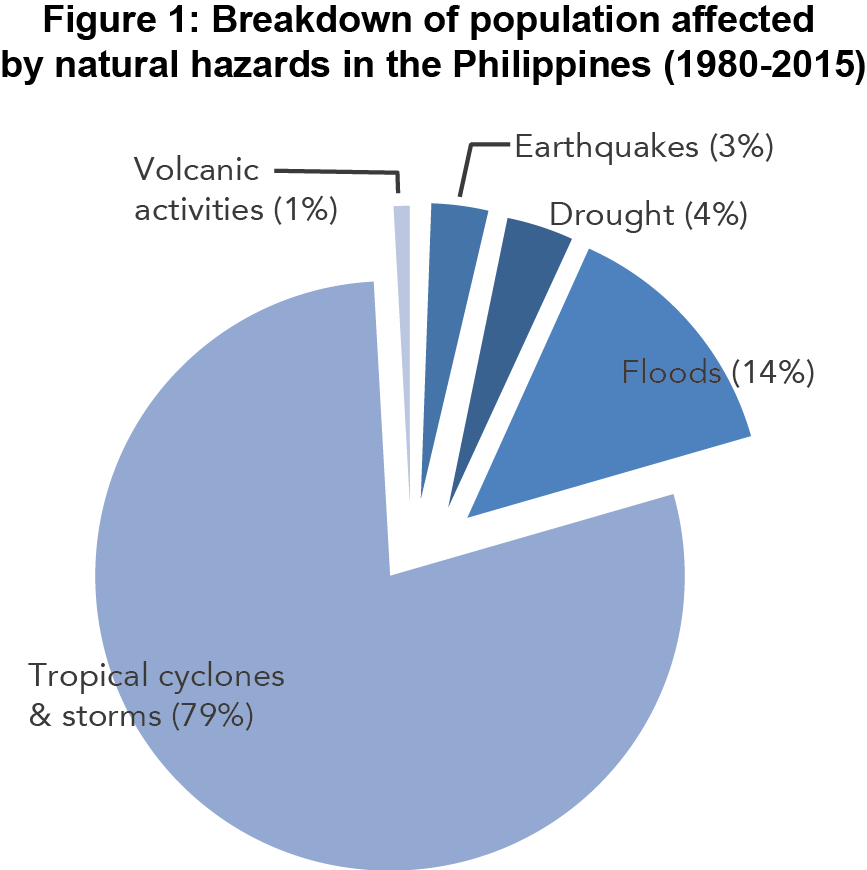
PAGASA forecasts between 8 and 17 tropical cyclones to develop in or enter the Philippine Area of Responsibility during the coming five months, while stronger typhoons are expected in the last quarter of the year. The country is affected by an average of 20 tropical cyclones annually.
The state weather bureau also warned of an anticipated La Niña phenomenon, which will begin developing in August with its effects peaking between November 2016 and February 2017. La Niña will likely bring above-normal rainfall and thus increase the potential for floods and landslides, particularly in the eastern parts of the country.
Tropical cyclones pose the highest disaster risk to the Philippines
Since 2011, the Philippines has consistently ranked as the world’s second or third most disaster-prone country in the World Risk Report. This is mainly due to the country’s high exposure to natural hazards.
Tropical cyclones were the leading cause of natural disasters in the Philippines between 1980 and 2015, according to the EM-DAT International Disaster Database of the Centre for Research on the Epidemiology of Disasters. This was followed by floods, drought, earthquakes and volcanic activities. The highest number of disaster victims was recorded in 2013 due to Super Typhoon Haiyan (known locally as Yolanda) that devastated the Visayas in November and a magnitude 7.2 earthquake in Bohol in October.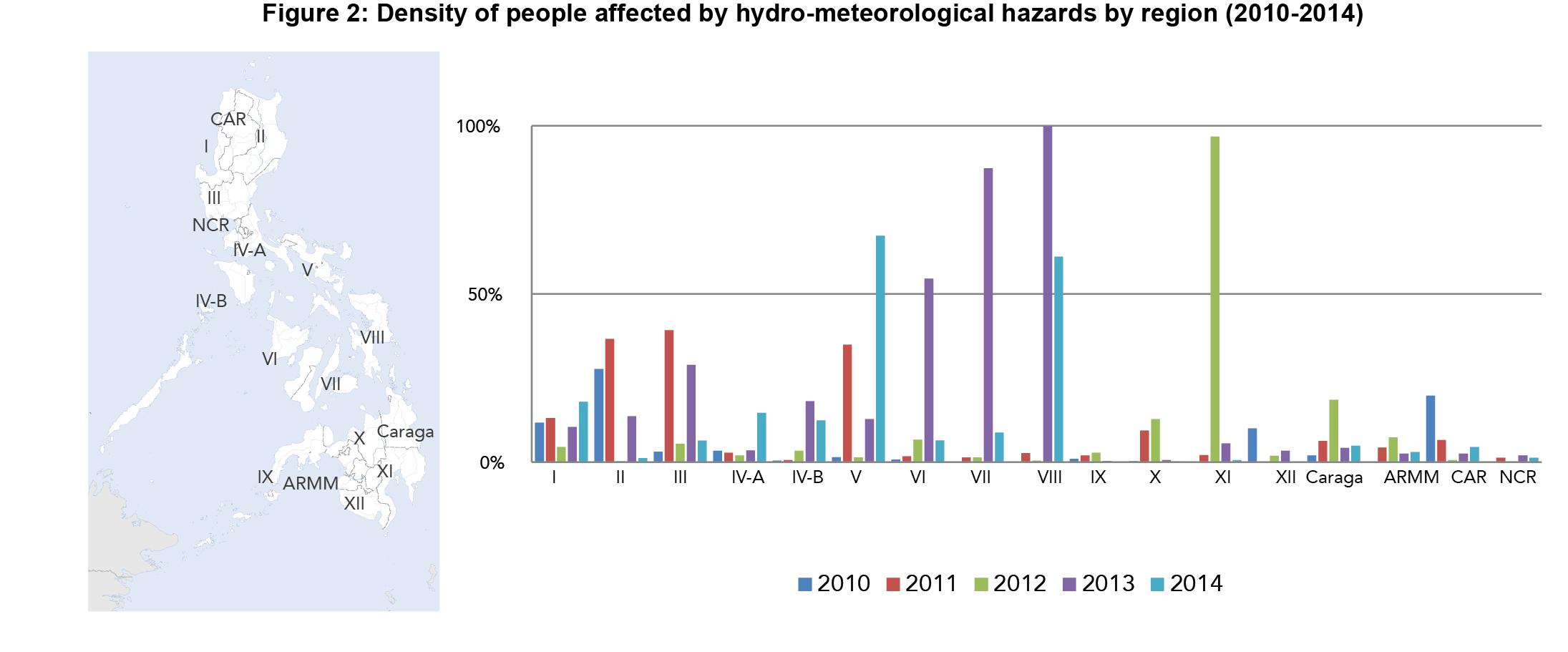
Between 2010 and 2014, Central Luzon (Region III) was home to both the highest numbers of hydro-meteorological incidents and of people cumulatively affected by these incidents, according to the Office of Civil Defense. Typhoon-related incidents were more common in Luzon (Regions II, III, V and the Cordillera Administrative Region) while Mindanao regions suffered seasonal flooding.
The concentration of the people affected by hydro-meteorological disasters among the total population was the highest in regions along the eastern seaboard of the country hit by strong tropical storms and typhoons. Spikes in Figure 2 generally correspond to the occurrences of strong tropical cyclones that affected these regions e.g. Typhoons Nesat (Pedring) and Nalgae (Quiel) in 2011, Typhoon Bopha (Pablo) in 2012, Typhoon Haiyan in 2013, and Typhoon Hagupit (Ruby) in 2014.
El Niño / La Niña Snapshot (May 2016)
Humanitarian partners gear up emergency response preparedness
The year 2015 saw an increased capacity of the Philippine government to manage disaster response and relief operations, to which international aid agencies provided targeted support with local capacity and in-country resources. Ahead of the 2016 rainy season, the Philippines Humanitarian Country Team (HCT) – composed of UN agencies, NGOs and the Red Cross movements – has worked to further strengthen the national response preparedness in the areas of civil-military coordination, data preparedness, sectoral response planning and operational capacity building. At the same time, HCT is readying itself for the next disaster to be able to complement the government-led response with speed and at an appropriate scale.
International humanitarian partners build national response capacity while advancing their own response preparedness for the next disaster.
Between 8 and 17 tropical cyclones are expected to affect the Philippines before the end of October.
The highest densities of people affected by hydro-meteorological hazards were found in regions along the eastern seaboard hit by incoming tropical storms and typhoons.
International humanitarian partners build national response capacity while advancing their own response preparedness for the next disaster.
Philippines at the World Humanitarian Summit
The first-ever World Humanitarian Summit, marked by the UN Secretary-General Ban Ki-moon as “a turning point” for the international aid system, brought together 173 Member States, 350 private sector representatives, and over 2,000 people from CSOs and crisis-affected communities. Together, they made some 1,500 commitments to transform the global wealth, knowledge and awareness into actions based on the Five Core Responsibilities of the Secretary-General’s Agenda for Humanity.
At the summit, Filipinos championed discussions and initiatives to better address the vulnerabilities of crisis-affected people and to enhance national disaster preparedness and resilience through partnerships across sectors and borders. Secretary Corazon “Dinky” Soliman of the Department of Social Welfare and Development, who headed the Philippine delegation to the summit, delivered the country’s commitments to actions including the passage of the Internally Displaced Persons Bill and the full implementation of the newly-signed Children’s Emergency Relief and Protection Act.
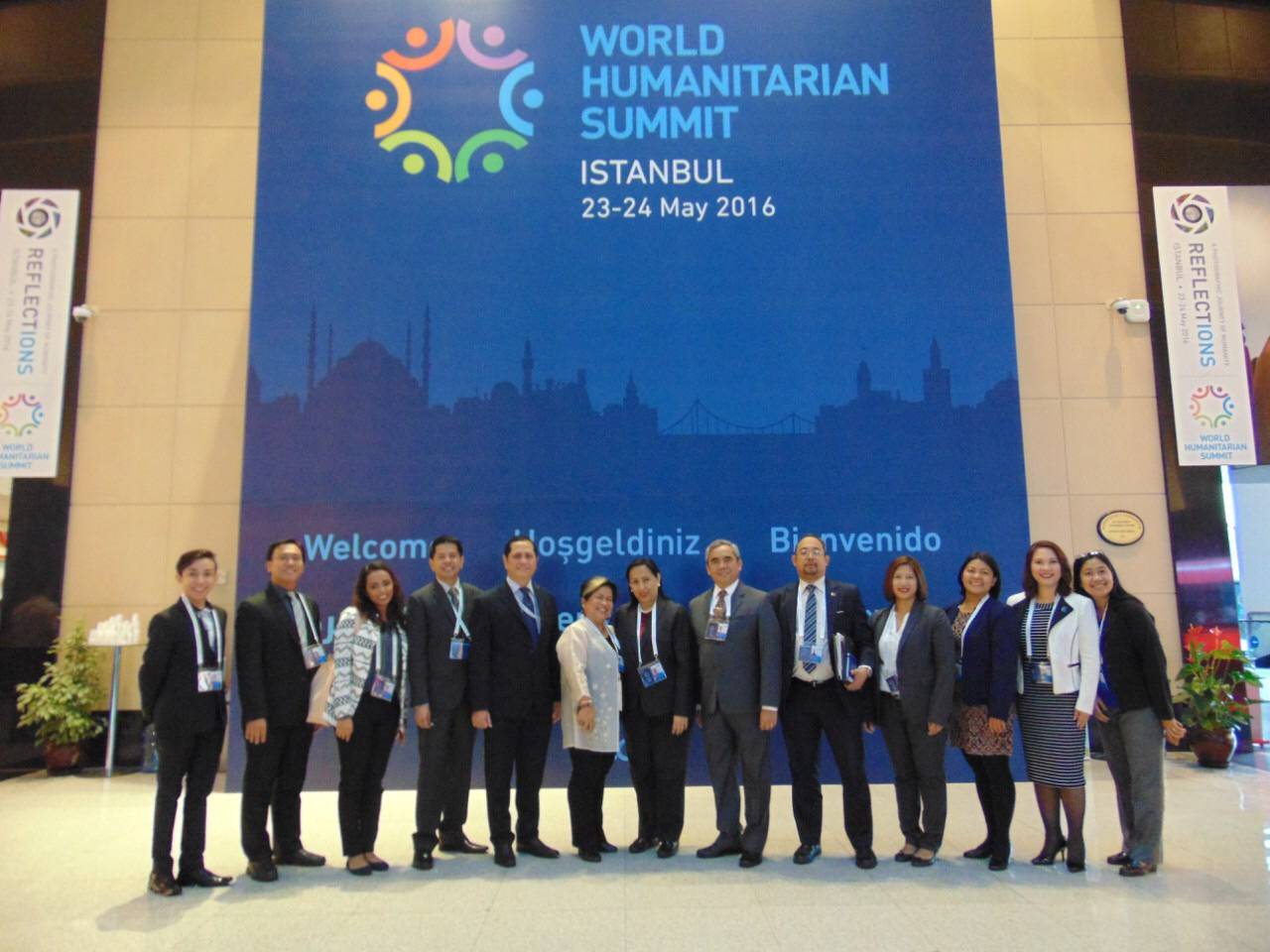
The Philippines, as the Chair of the Vulnerable Twenty (V20) Group of Ministers of Finance of the Climate Vulnerable Forum, led the launch of the New Global Partnership for Preparedness. The partnership seeks to support the disaster-prone countries with the development of risk analysis and early warning mechanisms, contingency plans, and shock-resilient social protection, basic services and response delivery systems through collaborations with UN agencies and the World Bank.
The Philippine Disaster Resilience Foundation, together with private sector networks of five other countries and the East Africa region, launched the Connecting Business Initiative. This multi-stakeholder initiative, spearheaded by OCHA, UNDP and UNISDR, will provide a framework for strategic business engagement and public-private partnerships in disaster risk reduction, preparedness, response and recovery.
On the newly-forged Regional Organizations Humanitarian Action Network, the Philippines through a joint statement of ASEAN advocated nationally led, regionally supported disaster response and committed to enhancing cooperation among ASEAN members to strengthen regional resilience.
Sixteen-year-old Chloe Reynaldo took part in a side event on prioritizing sexual and reproductive health in humanitarian assistance, as well as a special session on transforming humanitarian action with and for youth. She recounted her experience here.
Richard Gordon, Chairman of the Philippine Red Cross advocated putting crisis-affected people at the centre of the humanitarian agenda and investing in local actors to build community resilience at the side event on inclusive leadership in humanitarian action.Representatives of the Philippine government, the private sector, civil society, the Philippine Red Cross and Filipino youth took part in the World Humanitarian Summit.
